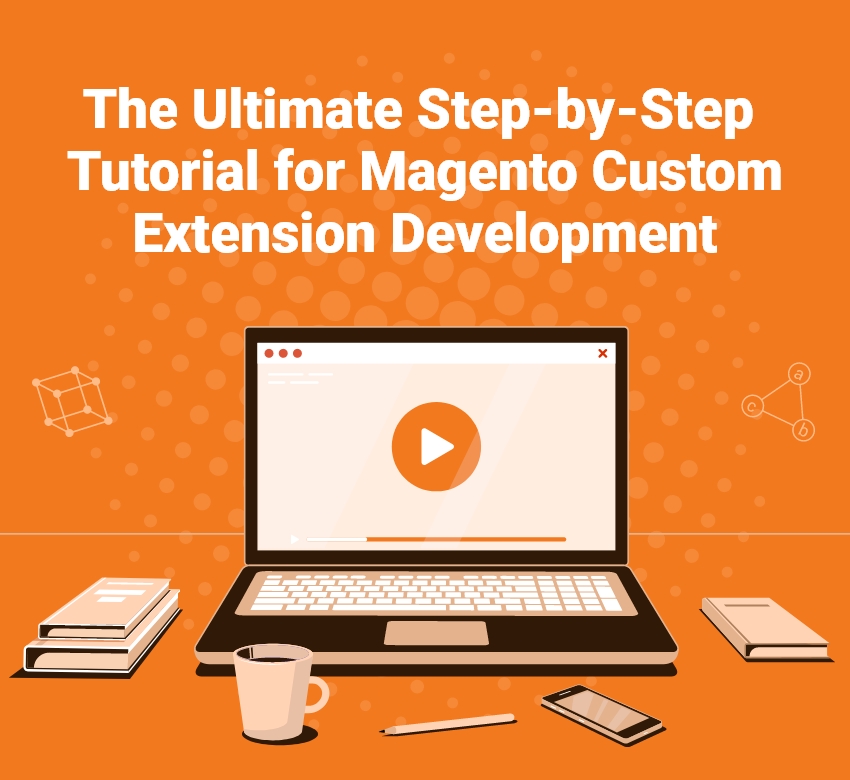
Magento has powered over 250,000 active eCommerce sites, which shows how much people trust and rely on it in the digital market. This platform handles more than $155 billion in sales annually, underlining Magento’s important role in online retail. These numbers show that Magento can keep up and do well in the fast-changing eCommerce area.
Magento Custom Extension Development is very important for the platform’s flexibility and function. Think of these extensions as apps for your smartphone. They improve the online store, giving users a shopping experience that meets their needs. These extensions help with everything from payment and shipping to marketing and customer support.
Investing in your own Magento extensions is not just about adding features. It’s about making your site powerful, efficient, and personalized. Magento development services are very important in this transformation. They bring expertise and insights that can improve your eCommerce presence.
Ultimately, Magento’s strong platform and the innovative power of custom extensions give businesses a powerful tool in online retail. Using Magento custom extension development, companies can improve their online presence, make operations more efficient, and give customers a better shopping experience that meets their changing needs.
With eCommerce getting more competitive, smart investments in Magento extension development can make a difference in long-term success and growth.
What Are Magento Extensions?
Magento extensions are like smartphone apps. They boost a Magento eCommerce store’s features or capabilities, improving its function and the experience for both the owner and customers. These extensions can be simple design changes or complex backend improvements. Magento’s modularity allows for these customizations, making it a top pick globally for Magento E-Commerce Website Development.
Custom vs. Pre-built Extensions
There are two main types of Magento extension development: custom and pre-built. Pre-built extensions in the Magento Marketplace or other sites provide ready solutions for common eCommerce needs. They’re like general software aimed at a wide audience.
Custom extensions, however, are made to meet a specific Magento store’s needs. They’re built from scratch, offering a perfect fit for a business’s unique challenges and requirements. This customization leads to unmatched integration and functionality in the Magento ecosystem.
Magento powers over 12% of all eCommerce sites, showing its popularity and the widespread use of extensions in its ecosystem. Additionally, a Magento extension development company specializing in custom extension development can cut project times by up to 30%, proving the efficiency of custom solutions.
Thus, Magento custom extension development is vital for businesses wanting to use their online presence fully. With a skilled Magento development agency help, companies can handle eCommerce complexities, ensuring their store meets and surpasses today’s digital consumer expectations.
Preparing for Magento Custom Extension Development
Starting Magento custom extension development requires careful planning and knowledge of the Magento setting. This task is vital for new and experienced developers who want to improve how Magento eCommerce platforms work.
Setting Up Your Magento Environment
The first step is to set up a good Magento environment. You do this by installing Magento. You can use Composer, GitHub, or download it directly from the Magento site. Developers should pick a development environment similar to the live server settings.
This avoids compatibility issues. Using tools like Docker helps create separate environments for different projects. This way, changes in development do not mess up other projects or the live site.
Tools and Resources You Will Need
Magento 2 extension development needs some tools and resources. A key tool is a code editor or IDE like PHPStorm. This has features that help with Magento development, such as debugging tools.
Version control systems like Git are crucial. They help manage changes in your extension’s code, making development with others easier. Magento DevDocs is also key. It has a lot of documentation and guidelines.
Developers use command-line interfaces (CLI) for Magento too. These help with tasks like enabling/disabling modules, setting up upgrades, and deploying static content. Knowing and using these tools makes development smoother and more productive.
Understanding Magento Architecture and Coding Standards
Understanding Magento’s complex architecture and following its coding standards is key. Magento uses a modular architecture, which lets developers add and change functionality without touching the core system. Each module in Magento 2 has a specific job. It works independently and with other parts of the system, so it’s important to know how modules interact.
Magento also has specific coding standards to keep code quality high. These standards are based on PSR and include things unique to Magento. Following these standards is crucial for making reliable, scalable, and secure extensions. Tools like PHP_CodeSniffer, set up with Magento’s standards, can help check if your code meets these guidelines.
Magento’s setup includes a complex front that uses technologies like LESS and Knockout.js. Knowing Magento’s backend and frontend parts is important for making efficient extensions that offer a smooth user experience.
As the need for personalized eCommerce experiences grows, so does the value of Magento custom extension development, making it an important skill for developers.
Step 1: Planning Your Magento Extension
Starting with Magento custom extension development means laying a strong foundation. This foundation begins with careful planning. Ensure your extension fills a specific need and boosts the Magento eCommerce experience. At this stage, defining the extension’s goal is crucial, as is conducting detailed research and planning the user interface. These steps lead to a successful extension.
First, clearly state what your extension will do. What problem will it solve? How will it improve the user experience or make a Magento store run more smoothly? The answers to these questions are at the heart of your project. You need a clear vision for your extension, which guides every part of the development process.
For instance, if your focus is on Magento eCommerce development, you might spot a need for an easier checkout process. Your extension could simplify checkout, reduce steps, or add more payment methods. The main thing is to have a clear goal that meets a real Magento community’s needs.
Research and Analysis: Spotting Similar Extensions and Finding Your Unique Offer
Once you know your extension’s purpose, the next step is research and analysis. Look at the Magento Marketplace and other places where extensions are shared or sold. Are there similar solutions out there? What do these extensions offer? How well do they meet the needs you’ve identified?
This research helps you avoid redoing what’s already out there and find what makes your extension different. What extra benefits can your extension provide? It could be better performance, more features, or easier integration. This step ensures your extension stands out by offering something unique and valuable.
In summary, the Magento 2 extension development services‘ planning phase is about setting a clear and informed direction for your project. It involves defining your extension’s purpose, doing deep research to ensure it brings something new, and carefully planning the UI and UX.
By spending enough time and thought on this phase, developers can build a strong basis for creating Magento extensions that meet a specific need and enrich the Magento ecosystem.
Step 2: Setting Up Your Development Environment for Magento Custom Extension Development
When creating custom Magento extensions, getting your development environment right is key. This setup is where all the development action happens, and doing it right means a smoother and more efficient development journey.
Installing Magento with Specific Version Considerations
The journey starts with installing Magento. Picking the correct version of Magento is crucial because each version has unique features and compatibility needs. For custom Magento extension development, using the latest version is smart. This way, you benefit from the latest features and security updates.
You can install Magento in a few ways, but using Composer is Magento’s suggested method. Composer handles dependencies and ensures you have the correct components for your Magento version. Also, setting up a Magento database is essential for storing all the platform’s data.
Configuring Your IDE for Magento Development
An Integrated Development Environment (IDE) is your main workspace. Setting up your IDE right boosts your productivity. PHPStorm is a top choice for Magento and PHP development. It’s packed with helpful features like code completion and debugging tools.
Add the Magento plugin to use PHPStorm for custom Magento extension development fully. This plugin supports Magento’s structure and coding styles, making navigating the code easier. It also lets you run and debug tests in the IDE, which is crucial for high-quality extensions.
Properly setting up your development environment is essential for anyone looking to hire a Magento developer. It makes the development process smoother and ensures your Magento extensions’ high quality and compatibility.
Step 3: Creating Your Extension Skeleton for Magento Custom Extension Development
When diving into Magento custom extension development, creating the foundation of your extension is crucial. This initial step sets up the basic structure for your extension. It involves setting up the file setup, setting up module XML files, and putting together the registration.php file.
Here’s a simple guide every Magento 2 extension developer should follow to start their extension development.
Crafting the Basic File Setup
First, you must make the basic file setup for your Magento extension. This setup is like the skeleton of your extension, organizing its parts in a structured way that Magento understands. You’ll need folders like ‘etc,’ ‘Controller,’ ‘Model,’ ‘view,’ and ‘Setup.’ Each folder has a unique role:
- etc: Keeps configuration files that set up routes, modules, and system configs.
- Controller: Holds PHP files that manage requests and responses.
- Model: Keeps the business logic of your extension.
- view: Stores files related to the user interface, like layout, templates, and web files.
- Setup: Contains scripts for module installation and updates.
Setting up this structure is your first step in organizing your extension’s code by Magento’s design standards.
Setting Up Module XML Files
Next, configuring the module XML files is key. These files are vital for stating your extension’s basic settings and how it interacts with other modules. Mainly, you’ll deal with:
- module.xml: This file in the ‘etc’ folder names your module and its version. It also lists any dependencies, ensuring your extension works well with Magento’s core modules and any other extensions it may need.
- config.xml: Defines your module’s default settings, like system configurations and service class preferences.
Getting these XML files right is crucial for your extension to work smoothly within Magento.
Understanding the Registration.php File
The registration.php file is essential for letting Magento know about your extension. You place this file at the root of your extension’s structure. It registers your extension with Magento using a unique name. This step is vital for Magento to acknowledge and load your module.
Here’s a peek at what the registration.php file usually includes:
php
Copy code
<?php
\Magento\Framework\Component\ComponentRegistrar::register(
\Magento\Framework\Component\ComponentRegistrar::MODULE,
‘VendorName_ModuleName’,
__DIR__
);
Replace ‘VendorName_ModuleName’ in this code with your extension’s unique name. This action registers your extension, allowing Magento to include your module in its operations.
By carefully crafting the basic file structure, setting up the module XML files, and working out the registration.php file, you create a strong base for your Magento extension. This method fits Magento’s architectural requirements and eases further development.
With these steps, developers can move on to more detailed parts of Magento custom extension development, bringing their unique functions and enhancements to the Magento platform.
Step 4: Developing the Core Functionality for Magento Custom Extension Development
Now that your Magento extension’s foundation is set, it’s time to focus on building its main features. This stage turns the basic structure into a functioning part of the Magento Community Edition.
Developing core features includes working on the admin panel interface, setting up database schemas and models, and implementing the core logic and functionality. Let’s dive into each part.
Designing the Admin Panel Interface
The admin panel is your extension’s control center. Here, users, like store owners, will use your extension. It is crucial to make an easy-to-use and intuitive admin panel. It should match Magento’s admin theme and offer a smooth experience.
Think about what users will do with your extension. Organize the interface in a way that makes sense, with easy-to-find settings and features. Magento’s UI components can help you match the Magento admin look and speed up your work. Also, remember to design forms well. Group related items and label each field clearly.
Setting Up Database Schemas and Models
You must design the database schema if your extension needs to save data. This means planning the database tables and how they link up. Magento 2 uses a declarative schema, letting you define database structures in XML files. This makes it easier to update or remove modules later.
Creating models means making PHP classes that represent your extension’s data. These models deal with business logic like checking data, processing it, and talking to the database. Following Magento’s rules and standards when making models ensures your extension is strong, safe, and can grow.
Putting in the Logic and Features
After setting up the admin interface and data structures, you’ll add the actual features. This is where your extension starts to work within Magento.
Writing the code for your extension’s features might include changing product prices under certain conditions, adding new shipping methods, or connecting with outside services. It’s important to keep your site running fast and ensure your code is efficient.
Testing is a huge part of this step. Test your extension in different situations to ensure it works correctly and can handle mistakes or surprises. Using automatic tests, like unit and integration tests, can make your extension more reliable.
In short, building the main features is a key part of creating a Magento custom extension. It takes a good understanding of Magento Community Edition, a focus on the users when designing the interface, careful planning of the data setup, and solid coding of your extension’s features.
By paying attention to these details, you can make extensions that meet users’ needs and improve the Magento platform.
Step 5: Frontend Development for Your Magento Extension
After setting up your Magento extension’s main features, it’s time to focus on the front end. This part is all about making sure your extension is functional, looks good, and is easy for users to use.
Front End development includes fitting your extension into Magento’s front, tweaking themes and templates, and ensuring it works well on different devices and browsers.
Fitting Your Extension into Magento’s Frontend
First, you need to integrate your extension with Magento’s front end. This step is essential for a smooth user experience across the store. Magento’s theming system lets you change and add to the frontend look of your extension. You should know how to use Magento’s layout XML files.
These files decide how elements like blocks and containers appear on the page. With layout updates for your extension, you can add or change content without messing up the page’s overall layout.
A well-integrated extension will feel like it’s always been part of the store, improving the user experience. For example, if your extension adds a new section for product recommendations, it should fit with the store’s current design. This kind of seamless fit encourages users to interact more and improves your extension and store.
Tweaking Themes and Templates
Next, customize themes and templates to suit what your extension does and your branding needs. Magento’s theming engine is powerful, letting you change how your extension looks in detail. When customizing themes, stick to Magento’s guidelines to ensure your changes stay through updates.
You might make a custom theme based on Magento’s default theme or change templates to include your extension’s features. It’s important to make your changes in a way that doesn’t overwrite core files. This makes updates and maintenance easier.
Making Sure It Works on All Devices and Browsers
Today, it’s crucial that your extension works well on any device and browser. This step ensures everyone has a good experience, no matter how they access the store. Use responsive design and CSS media queries to make your extension look right on different screens.
Also, test your extension on major browsers like Chrome, Firefox, Safari, and Edge. Tools like BrowserStack are great for checking how your extension works in various browsers, helping you spot and fix problems early.
Developing the front end of a Magento custom extension needs careful work. By smoothly integrating with Magento’s front, customizing themes to fit your extension, and ensuring it’s responsive. It works on all browsers; you create an extension that brings new features to Magento stores and makes the whole store better for users.
Partnering with a Magento maintenance partner ensures your extension keeps up with Magento updates and new web tech.
Step 6: Testing Your Magento Extension
Testing is a key part of creating a Magento extension. It ensures the extension does its job and works well in the Magento environment. Testing covers different areas, like unit testing, functional testing, and ensuring it works with different Magento versions.
Let’s look at these testing stages and how they make a Magento extension reliable and high-quality.
Unit Testing: Making Sure Your Code Works Right
Unit testing checks each part of your extension’s code by itself. The main aim is to make sure every piece works as expected. Magento has a framework for this, letting developers automatically check their code’s logic.
For Magento custom extension development, unit tests find and fix problems early, saving time and effort later. Writing unit tests means knowing exactly what each part of your extension should do. By carefully testing each function and method, developers ensure their code is strong and error-free, making the whole extension more reliable.
Functional Testing: Ensuring Your Extension Does What It’s Supposed To
Functional testing examines the extension’s features to ensure they work properly within the Magento app. This stage tests the extension from the user’s perspective, ensuring everything works as the user would expect.
Magento’s Functional Testing Framework (MFTF) automates this, mimicking real user actions like clicking, filling in forms, and going through the extension’s steps. This helps find gaps between what should happen and what does happen, ensuring the extension offers a good user experience.
Compatibility Testing: Making Sure Your Extension Works with Different Magento Versions
Magento keeps updating, so it’s important to ensure your extension works with different versions, including the Magento Community Edition and Magento Commerce Edition. This testing checks that your extension doesn’t cause problems with Magento itself or other extensions on different setups.
Tools like Magento’s Version Compatibility Tool help check how the extension runs on various Magento versions and spot potential issues.
Sticking to these testing methods is essential for a Magento development company. They help deliver extensions that add value to Magento and are reliable. Thorough testing builds client trust and underlines the company’s commitment to quality in Magento custom extension development.
By focusing on detailed testing, developers can create extensions that meet high performance, usability, and compatibility standards, ensuring they’re ready for users.
Conclusion
The process of creating custom extensions for Magento is both detailed and rewarding. It opens up many chances to boost eCommerce features and customize online stores for specific business needs. We’ve gone through important steps for successful extension creation, from the start to packaging and marketing.
Magento custom extension development constantly changes, with new trends and tech appearing. This changing scene is an exciting chance for developers and businesses to find new solutions and go beyond the usual limits of eCommerce.
The potential benefits are big for those ready to start this adventure. Making custom extensions lets you tackle complex challenges and establishes you as a leader. It’s a chance to follow trends and create them, influencing eCommerce development and shaping the future of online shopping.
Moving forward, remember that the success of Magento custom extension development isn’t just about technical skill. It’s also about understanding users’ needs and offering solutions that improve their eCommerce experience.
This focus on users, together with technical know-how, will ensure that your extensions not only meet but surpass expectations, bringing success to both your business and your customers.
Are You Ready to Boost Your eCommerce Experience with Planet Web Solutions?
FAQs
What’s the difference between a theme and an extension in Magento?
A theme in Magento decides how your store looks. It sets the style for colors, fonts, and page layout. An extension changes or adds to what your store can do. Extensions can be anything from new ways to pay and ship items to tools for SEO or managing customer relationships. Themes affect looks; extensions affect functionality.
Can I develop a Magento extension without prior programming experience?
Making a Magento extension usually needs a good grasp of PHP and an understanding of how Magento works. Without these skills, it’s tough to create an extension. But, if you’re new, you could start by learning PHP and slowly get into Magento’s guides, tutorials, and community advice.
What are common pitfalls in Magento extension development?
Some usual mistakes include not sticking to Magento’s coding rules, not planning for future updates, not testing enough, and missing out on Magento’s features that could make development easier. These mistakes can make extensions hard to keep up with and update, or they might clash with other extensions or Magento updates.
How can I make sure my Magento extension is secure?
You should follow the best coding practices to keep your Magento extension safe. This means checking and cleaning data, using safe data handling methods, and staying updated with security practices for Magento and PHP.
What are the best practices for updating a Magento extension?
When updating a Magento extension, always test it in a test environment first, follow versioning rules, give clear instructions for updating, and let users know about the changes and their effects. Think about how the update will fit with the versions users already have to avoid problems.


